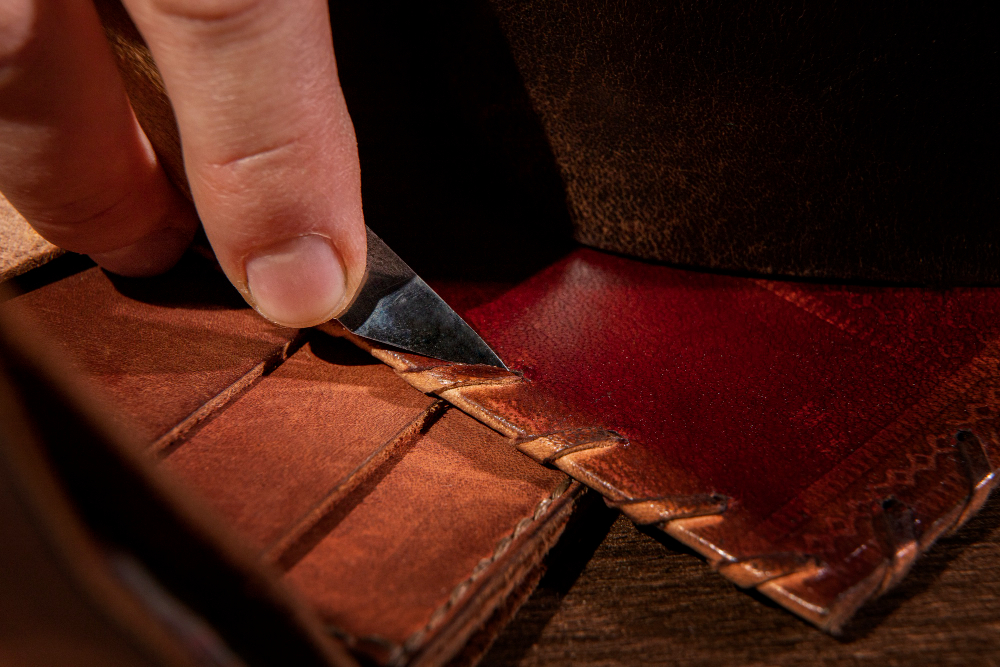The use of leather is a milestone in the fashion industry. But at the cost of what? The lives of 100 billion animals are at stake and being treated horribly, and inhumanely. It is time we rethink and take a pause. With the world resorting to sustainable fashion practices, the use of PU leather in the industry is prominent. Not only is the leather sustainable, but it is cost-effective and lasts you longer. Let us explore in the following article what is the difference between PU leather and real leather and measure its efficiency for the fashion industry.
Pu leather V/s real leather – a comparative study
Making a switch to artificial leather is the change in the fashion arena. Let us see why is artificial leather better than real leather.
1. Sustainable:
Real leather:
There have been serious concerns being raised about the rate of sustainability. The industry is now proceeding towards new materials, made of fossil-based polymers, and introducing fabric synthetic leather. Real leather is bio-based and biodegradable, but what is incorrect about real leather is the process. The use of harsh chemicals and toxic broad-spectrum materials, make the surroundings unbearable. Furthermore, the method and way in which leather is extracted from animals is only causing a threat to the natural ecosystem.
Natural PU leather:
Following the trend of sustainability is an integral part of the circular economy. Natural Pu leather is used to make polyester textiles coated in PVC or polyurethane films. The surface optic of fake, synthetic or fabric leather is made to look like an embossing grain structure. So there are no toxic materials involved only natural laxatives on the go.
2. Durability
Real leather:
The longevity of real leather is high and is non-admissible. But do you how are these made durable, by using the tropocollagen, a structural unit of collagen, found in coiled structures? The processing of this collagen unit is done in tanneries through toxins like emulsified oils (fat liquors), water-soluble aromatics, phenol condensates (retans), polymeric resins, etc. Hence, durability is achieved undoubtedly, but at the cost of filling lungs with smog and spasms.
Natural PU leather:
Natural leather is also durable, but the question here lies in the processing of natural PU leather. Fabric synthetic leather has a unique combination of unusual features including excellent mechanical strength, good abrasion resistance, toughness, low-temperature flexibility, corrosion, and resistance.
The method that is used for making this leather is nano-TiO2. This is a highly efficient photo catalyst to decompose dirt, on account of its low cost, non-toxicity, and high stability. The shine if at all, is procured by the process of illumination in visible light developing natural composites that have self-cleaning ability in photo catalysis.
3. Price and Demand
Real leather:
The visible fundamental difference between real leather and artificial leather is the texture, feel, and novelty. It is due to these reasons the price of real leather is high. This is now viewed that people tend to invest in real leather 40 percent more than any other fabric. Leather has always been a luxury product, widely used for luxe, premium apparel, and regular items (shoes wallets, belts). This “high demand” of leather in the apparel making makes it 11.9% high-demanding fabric compared to any other.
Natural PU leather:
This is one ground where real leather overtakes in the rat race. PU leather is available at a cheaper price and rate as compared to real leather. What makes real leather pricey is the full-grain leather made from ripping the hides of goats, buffalo and other animals. However, PU leather is made from natural reactions and illuminations which impacts the overall look of the leather. (Often lacks the glossy finish and breaks down when un-maintained).
4. Maintenance process
Real leather:
Taking proper care and maintenance is the key to any fabric. Cleaning the real leather involves both a wet and dry process. Since the leather has a glossy finish, you need to brush and not rub. Allow proper rest and let it air dry. Do not use the heat to speed up the drying process. Using conditioners can also help you to clean your leather surface. Use specific leather cleaners that you cannot be a general category cleaner.
PU leather:
For PU Leather, you do not have to go for any expensive leather cleaner. You can go for a basic soap and water solution and finish off with a non-abrasive cloth to wipe the exterior clean. Use a non-abrasive cloth ensuring there are no scratches on the cloth. This helps stop the general wear and tear and everyday marks from building up and making the surface look grubby.
Conclusion
Leather as we know has been dominating the fashion industry since the inception of time, for decades possibly. However, with the ever-growing use and encroaching of the animals for their skin, the fashion industry needs to pause and think. Finding a suitable option can include PU leather and other artificial leather. Not as harmful and naturally sourced can help with a continuing fashion statement and protect the environment as well.
Visit our home-page for more information



